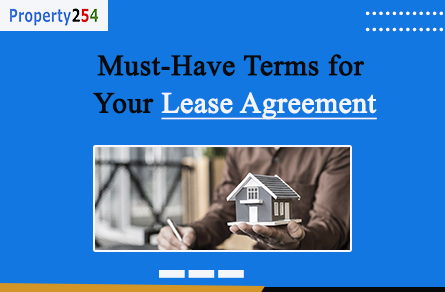If you are a landlord and have property to rent, it’s important to have a written lease or rental agreement. If you and your tenant have a legal dispute, having a written agreement increases your chances of a favourable outcome. Your lease or rental agreement should include the following items;
1. Tenants and occupants information
2. Information about the rental property
3. Length of the lease
4. Rent payments
5. Security deposit and other charges
6. Rules and policies
7. Contact information
8. repair and maintenance
Tenants and occupants information
It should be mandatory for anyone over the age of 18 to sign and be listed as a tenant on the lease or rental agreement. So, the tenants are legally obligated to pay their rent and to use the property in accordance with all terms and conditions set forth in the lease. Therefore, if the other tenants fail to pay, you can legally demand their entire rent from one of them, and if any tenant violates an important term of the agreement, you can terminate tenancy for the entire group of tenants.
Information about the rental property
Include the full address of the property, including the building and unit number. Also include If there are any specific parking areas. Be sure to include the assigned parking number, for example, if the rental includes it. If the tenants are not be allowed to access certain areas just include it in the agreement.
Length of the Lease
There are short-term tenancies (typically on a monthly basis) created by rental agreements that automatically renew until the landlord or tenants end them (depending on the agreement type) While leases create tenancies that expire after a specific period of time (usually a year). Please note the start and end dates regardless of which method you choose.
Rent payments
Specify when and how to pay rent, such as via mail to your office, in your contract. To avoid misunderstandings, include specifics such as, acceptable methods of payment (for example, personal check only, bank deposit only), what the late rent fee is (if applicable), how much it is (if applicable), and the grace period (if applicable).
Security deposits and other charges
There are several things you should be clear about if you want to avoid some of the most common conflicts between landlords and tenants: what you could use the deposit for (for example, covering any unpaid rent or repairing damage the tenant causes) and what you won’t accept it as payment of last month’s rent. To find out when and how you will refund the deposit and account for any deductions, check your state’s laws on returning security deposits when the tenants vacate the premises.
Repair and Maintenance Policies
A clear lease or rental agreement that outlines both the landlord’s and the tenant’s responsibilities for maintenance will help you avoid rent-withholding issues and other problems (especially with security deposits). As a tenant, you are responsible for keeping the rental property clean and you are also responsible for paying for any damage caused by your abuse or negligence. The tenant must notify you if there is a defect or hazard in the rental property, with specifics on how you will handle complaints and repair requests
Landlord’s Right to Enter Rental Property
It is important that your lease or rental agreement spells out exactly when the landlord have the legal right to enter the property, such as when making repairs, and how much notice you will give the tenant in advance. As a landlord its always important to give at least a notice of 24 hours before entering into a tenant’s house.
Rules and Policies
Do not forget to include any rules or regulations that are so important to you that you’d be willing to kick out a tenant who broke them. It is possible to write other, less important rules in a separate document. These terms and conditions are included in most rental agreements:
Illegal activity: As a way to limit your potential liability and to help prevent injury to others and your property, the contract should include a clause prohibiting illegal or disruptive behaviour, such as drug dealing or excessive noise.
Smoking: If you don’t allow smoking, remember that the ban covers all types of smoking. If you limit smoking, make a list of where and when tenants are allowed to do so.
Pets: If your rental allows pets, include the following policies: Specify the number of pets a tenant is permitted to have, as well as the types, breeds, and sizes of animals that are permitted. Note whether pets must be leashed outside the unit and whether tenants are responsible for cleaning up pet waste in common areas.
Contact Information
Encourage tenants to contact you in writing if they have questions or concerns about certain issues. The use of text messages and instant messaging may be appropriate in some situations, but it is important that you keep an accurate record of all communications with your tenants, which you can print out in the event you need to show a judge. Let your tenants write or give their notice inform of writing.
Bottom Line
These clauses in your rental agreement will protect you if your tenant turns out to be someone you don’t want to rent to anymore. Rental agreements make it simple to evict tenants who refuse to leave the premises. If you are a landlord and you need help in writing the Lease or rental agreement leave a comment, we will keep in touch with you.
Is there term you think is important? Let us know in the comments section.
Writing out a landlord-tenant contract can be tedious and time-consuming. While you could use boilerplate language you find on the internet, why take the risk? We can support you to draft a lease agreement for you or houses you manage. Contact us on 0726982982 and we shall give you a carefully drafted agreement for free.



No Comments
Your office head office